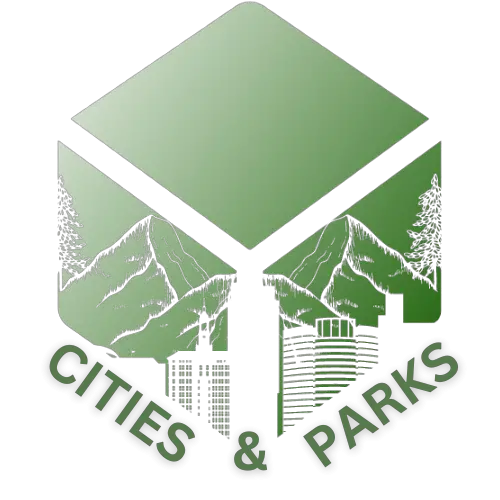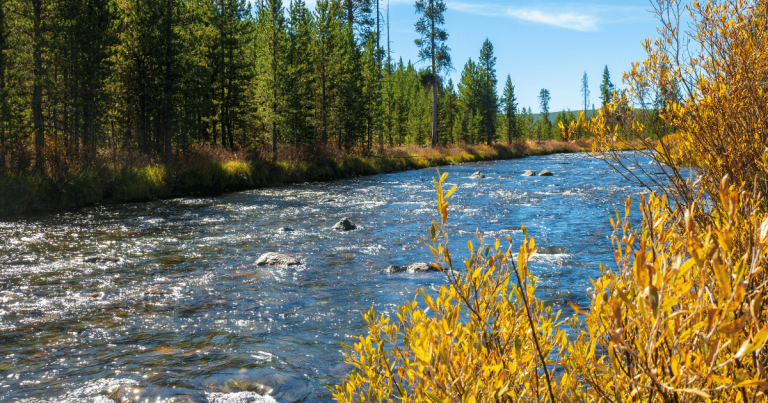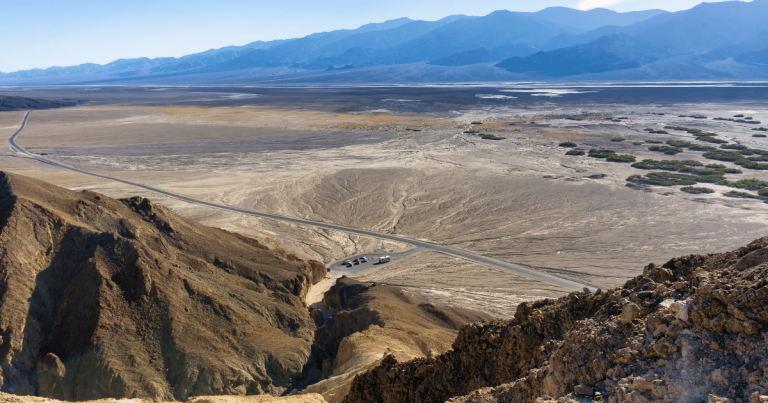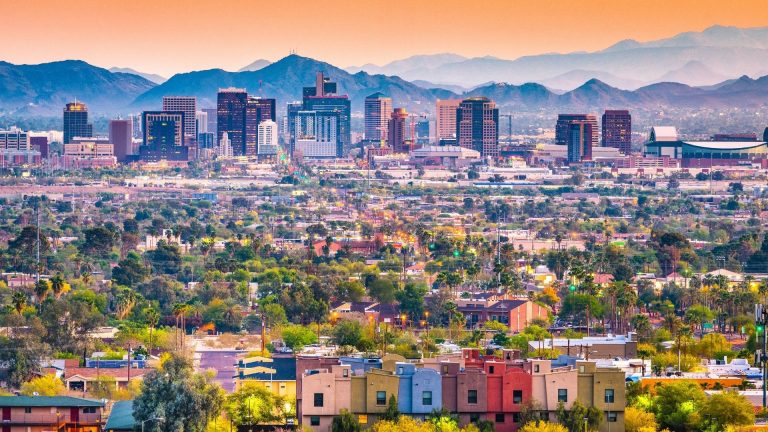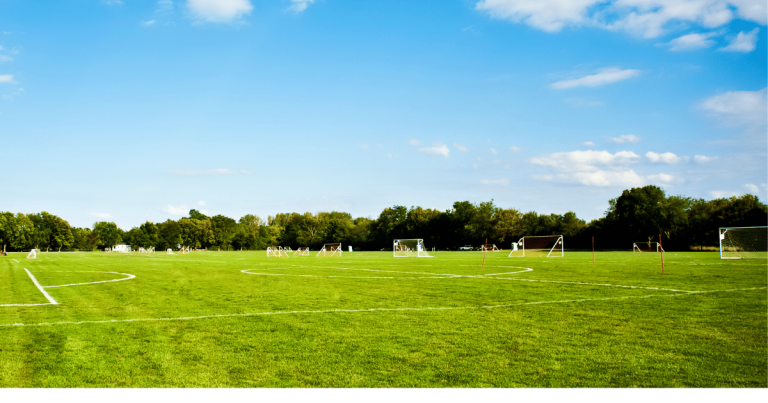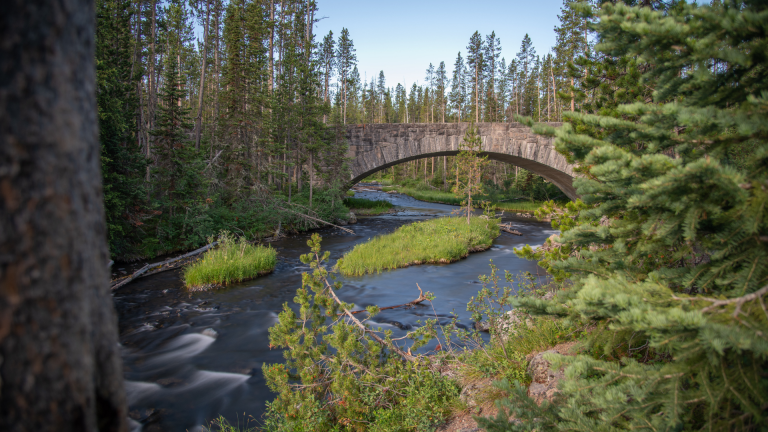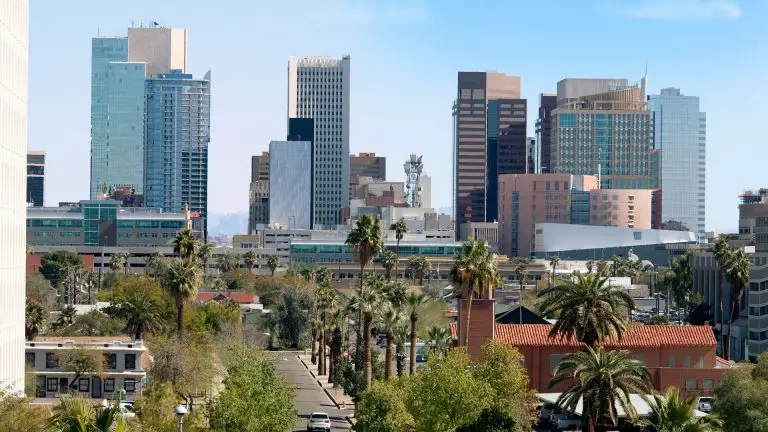Keyhole Cave Sedona: A Natural Wonder To Discover
Sedona, Arizona, is known for its red rock formations, stunning scenery, and of course, its vortexes. In addition to these natural wonders, Sedona is also home to an incredible cave system that not many people know about. One such cave is the Keyhole Cave Sedona, located in the Red Rock Secret Mountain Wilderness area.
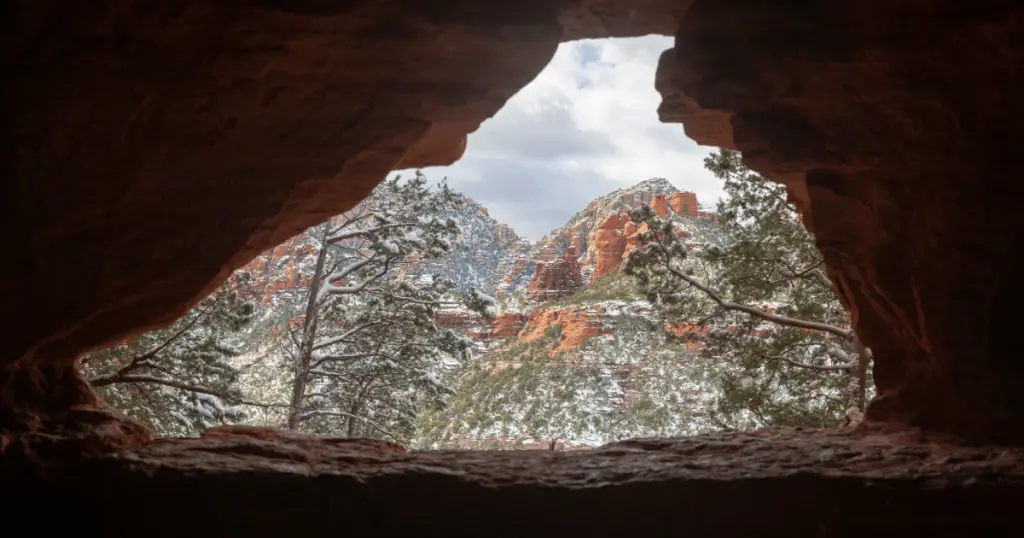
Access to Keyhole Cave
Accessing Keyhole Cave requires a moderate hike through the Red Rock Secret Mountain Wilderness area. Several trails are leading to the cave, each offering unique views and experiences. The Teacup Trail is the most straightforward, with a mostly flat terrain and well-marked paths. The trail is about 2 miles long, and hikers are rewarded with stunning views of Sedona’s famous red rock formations along the way.
For those seeking a more challenging trek, the Sugarloaf Loop Trail is another option. This 5-mile trail is steeper and more rugged, but the panoramic vistas at the summit are well worth the effort. Expect the journey to Keyhole Cave to take around 3 hours if taking this route.
Trail conditions are generally good year-round, but can become slippery after rain, so appropriate footwear is a must. Hikers should also bring plenty of water, sun protection, and a map or GPS device, as the cave is quite hidden and can be tricky to find. Always remember to respect the natural environment, leaving no trace so that future visitors can enjoy the cave just as you did.
Wildlife and Ecology Surrounding Keyhole Cave
The area around Keyhole Cave Sedona is brimming with an abundance of wildlife typical of the Southwestern desert. Hikers may catch a glimpse of javelinas, mule deer, or even the elusive bobcat.
Flora and Fauna Around Keyhole Cave
The vicinity of Keyhole Cave is a tapestry of diverse plant and animal species, embodying the richness of Arizona’s desert ecology. The landscape is dotted with iconic desert plants such as agave, yucca, and the towering saguaro cactus. These plants not only provide a captivating backdrop for hikers but also play a crucial role in the local ecosystem, providing food and habitat for numerous desert-dwelling creatures.
The animal kingdom is represented by a variety of birds, mammals, and reptiles. Watch for the scurrying antics of the antelope squirrel, or keep an eye on the sky for a glimpse of the majestic red-tailed hawk. At dusk, you may even spot the characteristic swoop of a bat emerging from the cave to start its night hunt.
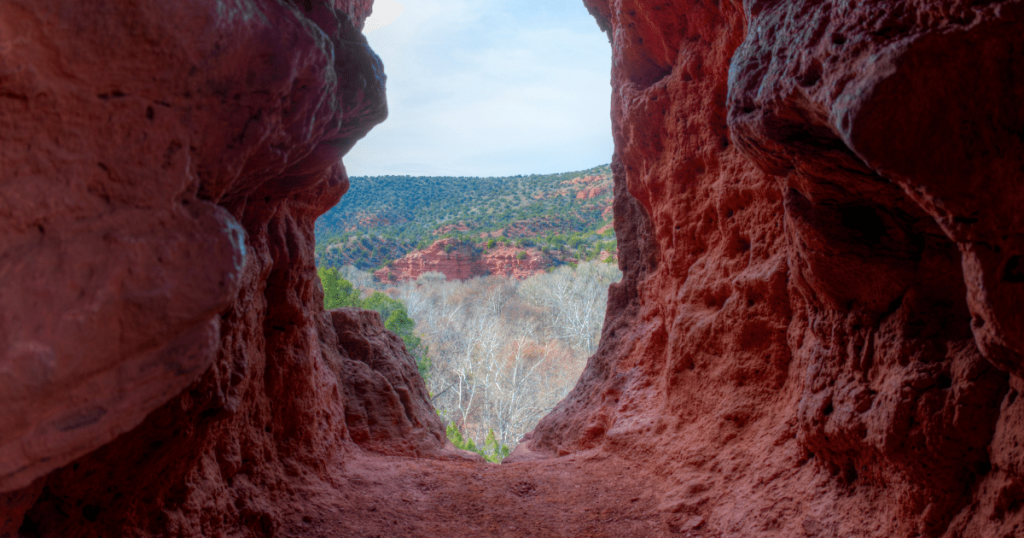
Environmental Impact and Conservation Initiatives
Visitors to Keyhole Cave indeed have a significant impact on the surrounding environment. Increased foot traffic can lead to soil erosion and disturbance of the natural habitats of local wildlife. Furthermore, any litter or waste left behind by visitors can harm the ecosystem and the scenic beauty of the area.
There are several conservation initiatives in place to mitigate these impacts and protect the natural splendor of the Keyhole Cave surroundings. The Red Rock Ranger District of the Coconino National Forest, which oversees the area, enforces strict ‘Leave No Trace’ principles. These principles encourage visitors to minimize their impact on the environment by adhering to guidelines such as disposing of waste properly, respecting wildlife, and leaving what they find.
Geological Formation and Unique Features of Keyhole Cave
Keyhole Cave is named for its distinctive keyhole-shaped entrance, carved by eons of wind and water erosion. The cave itself is formed primarily of sandstone, a sedimentary rock that is characteristic of the Southwestern desert landscape.
Formation Process of Keyhole Cave
Keyhole Cave’s formation is a testament to the power and persistence of nature’s forces over thousands of years. The cave is primarily made up of sandstone, a sedimentary rock formed from compacted sand deposited by wind and water. Over time, these layers of sand hardened into rock, creating the base material for the cave.
The formation of the keyhole-shaped entrance and the cave’s unique features were primarily influenced by the processes of erosion. Wind and water, the architects of this natural marvel, wore down the softer sandstone over millennia. Rainwater, often acidic due to dissolved carbon dioxide, seeped into the cracks and crevices of the rock, slowly dissolving it and carving out the cave’s interior.
At the same time, wind action, carrying abrasive particles of sand and dust, sculpted the keyhole-shaped entrance that gives the cave its name. This process, known as abrasion, is particularly effective in the desert environment surrounding Sedona. The result of these combined forces is the fascinating and distinctive structure known today as Keyhole Cave.
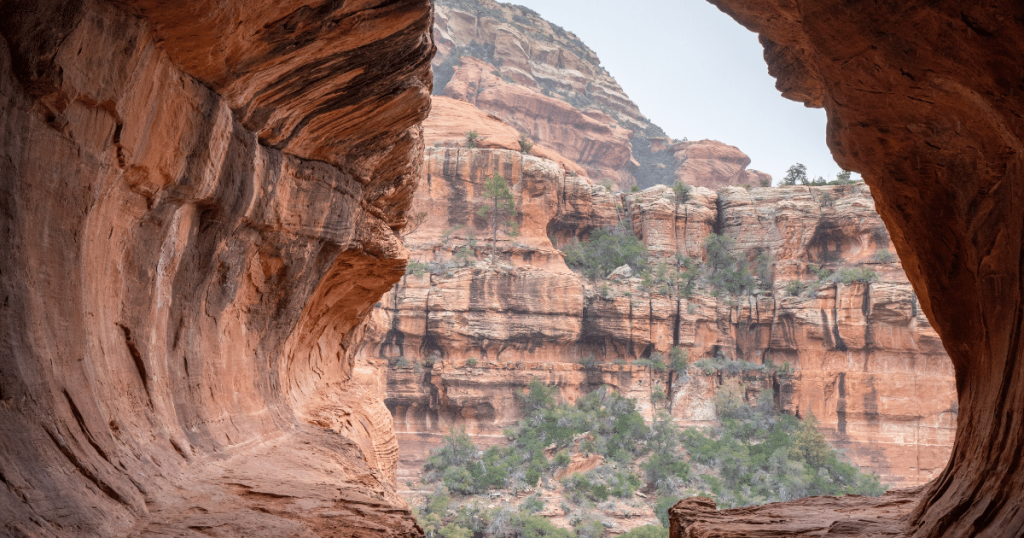
Keyhole Arch and Cave Structure
The Keyhole Cave’s entrance is a natural arch, a testament to the relentless forces of erosion that have sculpted the rock over millennia. This arch, resembling the eye of a needle or a keyhole, has given the cave its distinctive name.
Made entirely of sandstone, the arch stands as a gateway to the wonders that lie within, a unique, almost whimsical feature that captures the imagination of all who visit.Once past the arch, the internal structure of Keyhole Cave is equally captivating.
The cave’s dimensions vary, with a height ranging from a spacious 10 feet near the entrance to a more confined 4 feet towards the back. The cave’s floor space, on the other hand, measures approximately 20 feet deep, providing ample room for exploration.
The walls of the cave bear the marks of the slow, patient work of water and wind erosion. They reveal layers of sediment that have been compacted over thousands of years to form the sandstone that makes up the cave.
These layers serve as a geological record, a timeline of the natural history that has shaped the region. It’s a truly awe-inspiring space, offering a stark, tangible reminder of the immense scales of time and process involved in the formation of such natural wonders.
Photography and Artistic Inspiration
Keyhole Cave, with its unique structure and the captivating natural landscape that surrounds it, provides immense inspiration for photographers and artists alike. The keyhole-shaped arch of the cave entrance, juxtaposed against the vast, open sky, creates a compelling composition that captures the imagination.
The play of light and shadow within the cave’s interior adds depth and texture to photographs, transforming ordinary snapshots into dramatic works of art.
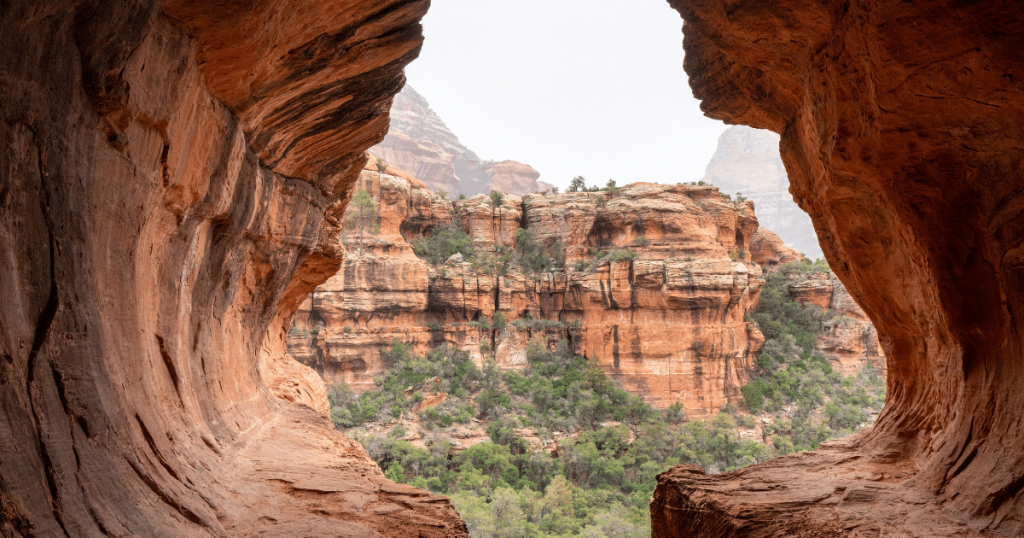
Moreover, the diverse flora and fauna in the vicinity offer countless opportunities for wildlife photography. The vibrant hues of the desert plants contrast beautifully with the earthy tones of the sandstone, while the wildlife provides dynamic, ever-changing subjects to capture.
For artists, the intricate patterns of erosion on the cave walls can inspire abstract works, while the panoramic views of the Southwestern desert landscape are perfect for more realistic interpretations. The changing conditions throughout the day, from the golden glow of dawn to the fiery hues of sunset, provide different lighting conditions that can significantly alter the mood and tone of a piece of art or photograph.
Final Thought
Keyhole Cave Sedona stands as a testament to the unrelenting forces of nature and the passage of time, offering visitors a unique window into the geological history of the Southwestern desert landscape. Its distinctive architecture, borne from thousands of years of wind and water erosion, along with its rich array of local flora and fauna, make it a must-visit destination for nature enthusiasts and artists alike.
The cave and its surroundings not only offer a thrilling exploration experience but also serve as compelling reminders of the importance of environmental conservation. As we marvel at these natural wonders, we are reminded to uphold the ‘Leave No Trace’ principles, ensuring that future generations can continue to enjoy and draw inspiration from these unspoiled landscapes.
